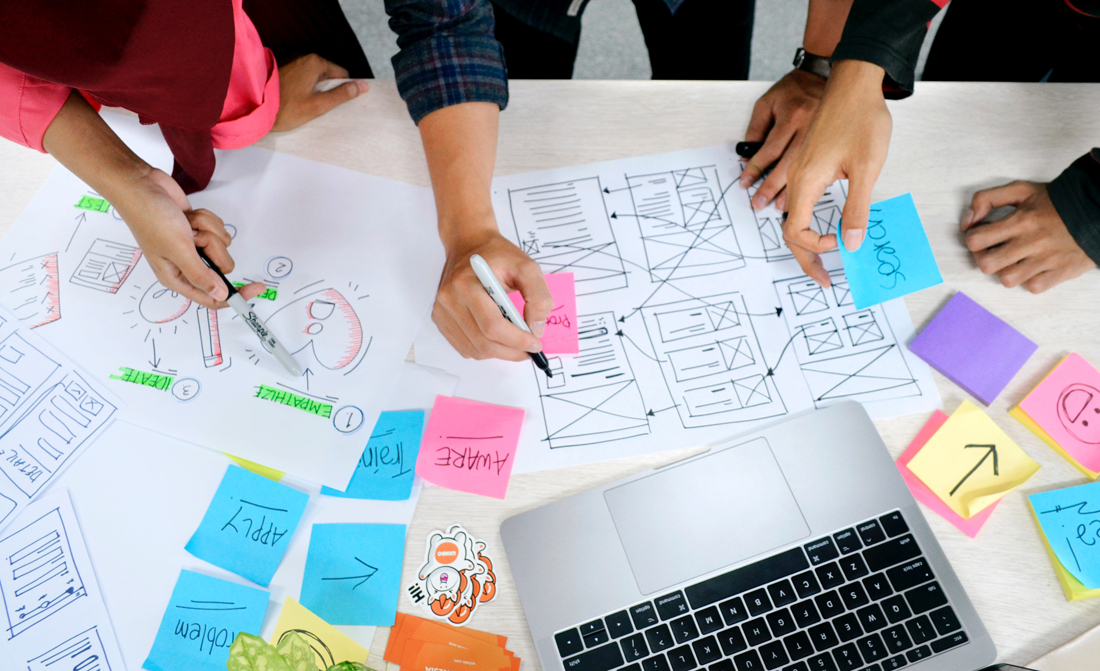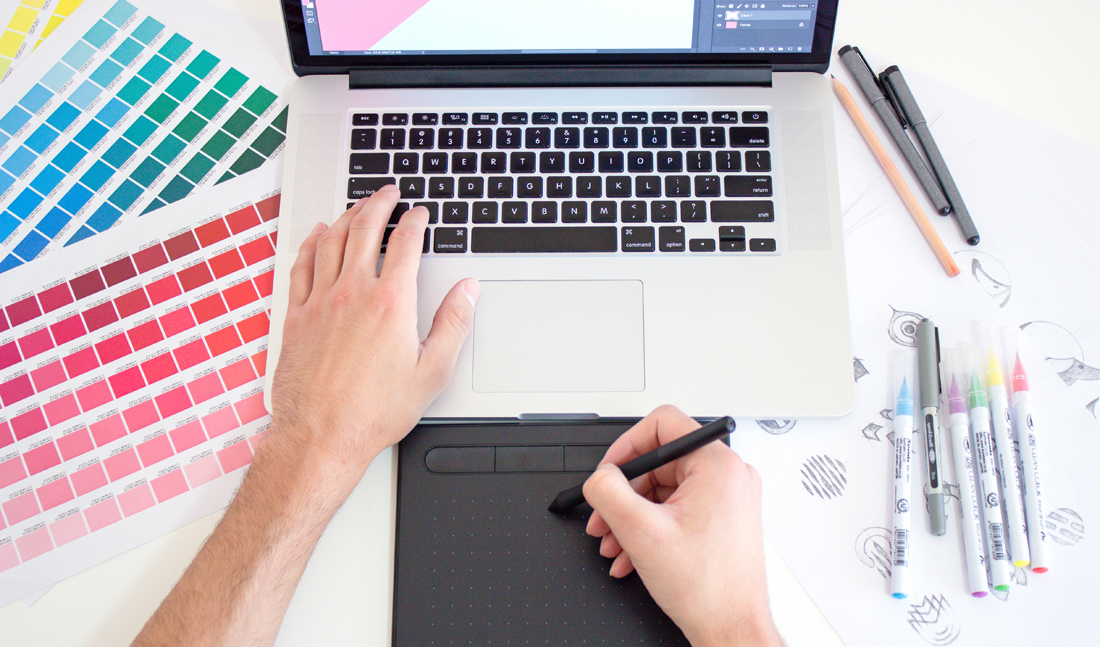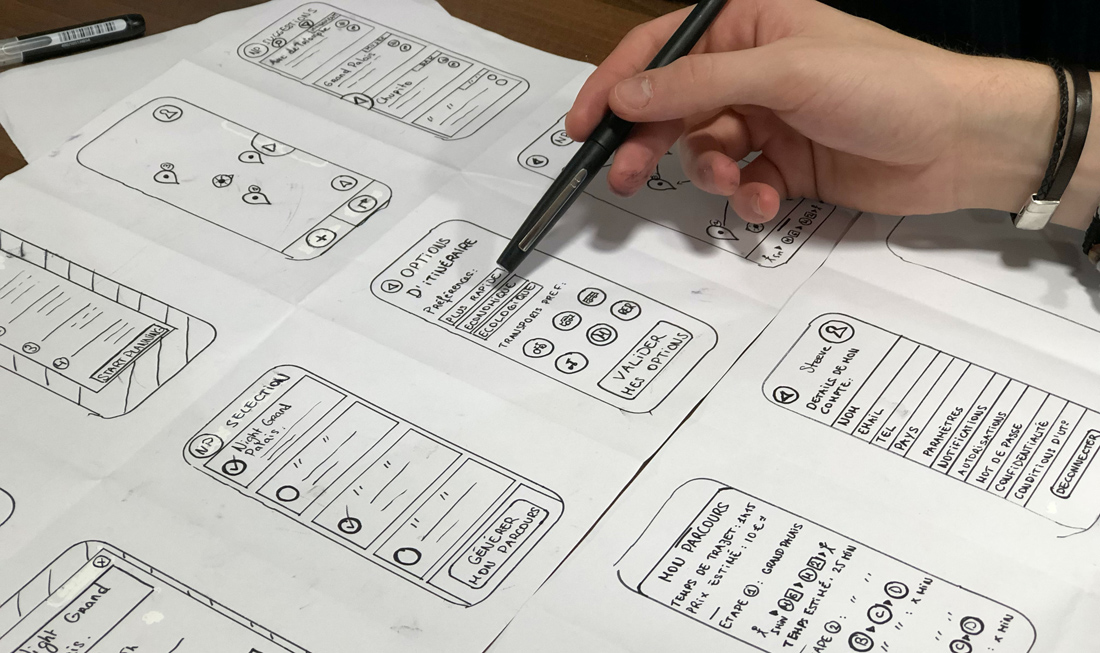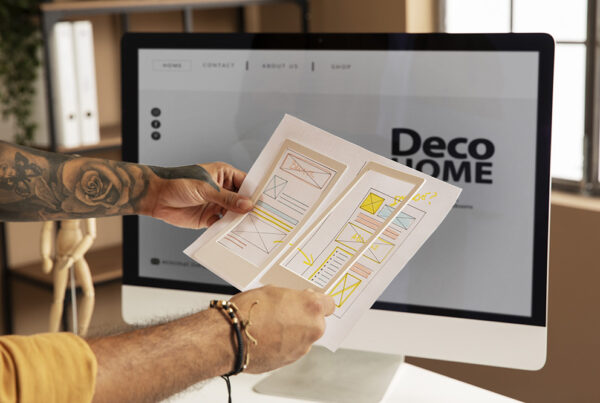Think about how the digital world is always changing. Web design is not just about making things look good anymore – it is a powerful tool that can change the way you act online.
With so many websites competing for your attention, it’s really important to know about web design psychology. This helps us make websites that work well and make you want to use them. In this article, we will explore the world of web design psychology. You’ll discover how understanding user’s online behaviour can guide you in creating improved websites. As the online world gets busier, websites have to find ways to grab your attention. This is where web design psychology comes in – it shows us how to make websites that not only catch your eye but also make you want to stick around.
Related Articles:
Web design and psychology
Web design isn’t just about putting pictures and words on a screen anymore. It’s more like leading a group of mental tricks that encourage people to do specific actions. Design psychology is all about understanding how our brains work and how we make choices when we’re using websites. The concept of web design psychology comes from cognitive psychology, user experience (UX) research, and behavioural economics to decipher how users perceive, interact, and make decisions within digital spaces.

One of the fundamental pillars of design psychology is the Gestalt principles. These principles emphasise how humans naturally perceive and organise visual information. Imagine building a puzzle. Design psychology is like knowing how people naturally put pieces together. For example, if things are close to each other, our brains think they belong together (the law of proximity). Or when we see an incomplete shape, our brains automatically fill in the missing parts (the principle of closure). These tricks help us decide what to look at on a website and make everything fit together nicely.
The power of first impressions
Just like when you meet someone for the first time in real life, first impressions matter immensely in the digital world. Researchers have found that websites have a mere fraction of a second to capture a user’s attention. This is when way colours, fonts, and how things are arranged becomes significant. Colours can make you feel different emotions – like blue might make you feel safe, red could mean something is important, and green might make you think of nature or calmness. Typography, on the other hand, influences how content is consumed – serif fonts may convey tradition and formality, while sans-serif fonts exude modernity and simplicity.
The layout of a website also plays a pivotal role. The F-pattern and Z-pattern reading behaviours are essential considerations. Users often scan content in an F-shaped pattern – starting with a horizontal movement at the top, followed by a vertical movement down the page. The Z-pattern, common in pages with less text, involves scanning in the shape of a Z. Understanding these patterns enables web designers to strategically place critical information and calls-to-action where users are most likely to see them.

Navigating with ease
Effortless navigation is a hallmark of effective web design. Psychology shows us that people will probably stay and use a website more if they can easily find what they are looking for. This is where the idea of cognitive fluency comes in. Cognitive fluency suggests that people prefer things that are easy to understand and process. To make this happen, designers should ensure that the navigation menus you use to get around the website are clear, short, and logically organised. The words used should explain themselves, and the menus should look the same on every page.
Furthermore, the paradox of choice should be kept in mind. Remember the confusing situation that happens when there are too many choices. Having lots of options can seem nice, but sometimes it can make it hard to decide. By limiting the number of choices – whether it’s product options or navigation links – web designers can guide users toward the desired outcomes.
Web design psychology of visual hierarchy
In web design, visual hierarchy is a fundamental concept that leverages psychological principles to prioritise and organise content. Our brains are wired to process information hierarchically – scanning for the most important and relevant details first. We can use this idea by using different things like size, contrast, colour, and positioning on the website. If you need help implementing these techniques to create a seamless and user-friendly experience, consider hiring a UI designer.
Buttons that tell you what to do (we call them “calls-to-action” or CTAs) are a great example of visual hierarchy in action. When these buttons are big, bold, and strategically placed, web designers can guide users toward desired actions. For instance, you might sign up for a newsletter, make a purchase, or explore more content. The reason this works is because of something called the “Von Restorff effect.” It means you remember things that are different more than things that are the same.

Building trust and credibility
Building trust and credibility is important at a time when there are many online scams and misinformation. Psychology offers insights into how to instil confidence in users when visiting a website. Elements such as social proof – showcasing user testimonials, reviews, and trust badges – can make people feel good about the website. People tend to follow the crowd, if others have had positive experiences, they are more likely to engage.
Transparency is another vital component. When users feel that a website is upfront about its intentions, how it uses your information and business practices, they’re more likely to trust and interact with the website. Web designers can employ visual cues like clear privacy policies and secure payment icons to help build this trust.
The urgency and scarcity effect
Feeling like something is important and might not be available for long is a strong way to make people do something. When people think that a product or a special deal will be gone soon, they feel like they need to do something quickly. We can use this feeling in web design by adding things like timers that count down, offers that are only good for a short time, and showing when something is almost sold out. This makes people feel like they shouldn’t miss out (FOMO – fear of missing out), and it makes them decide faster.
But, it’s really important to be careful with this idea. Overusing urgency tactics can lead to a sense of distrust if users feel manipulated.. So, finding the right amount is really important. This helps keep your reputation good and encourages genuine engagement.

AI and personalisation
As technology continues to advance, the role of artificial intelligence (AI) in web design is becoming increasingly prominent. AI-driven personalisation leverages user data and behaviour to deliver tailored experiences. This means looking at what you like, what you’ve done before, and what you click on, AI algorithms can predict what content or products you are likely to engage with, enhancing the overall user experience (UX).
The reason AI personalisation works is because of something called the “mere exposure effect”. This means that when you see something many times, you usually start to like it more. Personalised content meets individual tastes and needs, increasing the likelihood of user engagement and conversion.
In the complex relationship between web design and psychology, web designers have the unique opportunity to shape user behaviour, influence decisions, and create meaningful connections. Knowing how our minds work when we use websites is important now, especially with so many websites out there. Web designers can use ideas from psychology – from first impressions and navigation to visual hierarchy and trust-building – designers can craft websites that not only captivate visually but also resonate emotionally, ultimately leading to more engaged and satisfied users. As technology evolves, so too will the intersection of design and psychology, paving the way for ever more sophisticated and effective web experiences.
As you finish reading, think about this: How might knowing more about how people use websites change the way you create your own? Ready to take your designs to the next level? Our London digital agency is here to help – reach out to us for personalised guidance in crafting a site that truly resonates with your audience.


